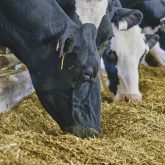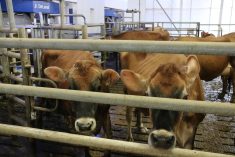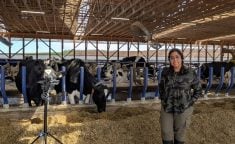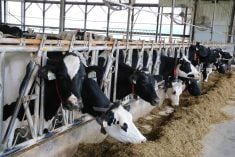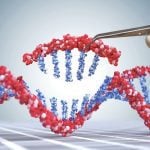Weaning calves takes more planning and work than it used to, but the rewards can be significant in performance later in life.
Why it matters: Cows and first-calf heifers are now worth much more money, so making sure calves get off to a good start is critical.
Calves are now fed about eight litres of milk per day, but some farms are feeding up to 12 litres per day. That’s a long way from the four litres per day that was standard when Kathleen Shore of Grand Valley Fortifiers started her career feeding calves on a farm.
Read Also
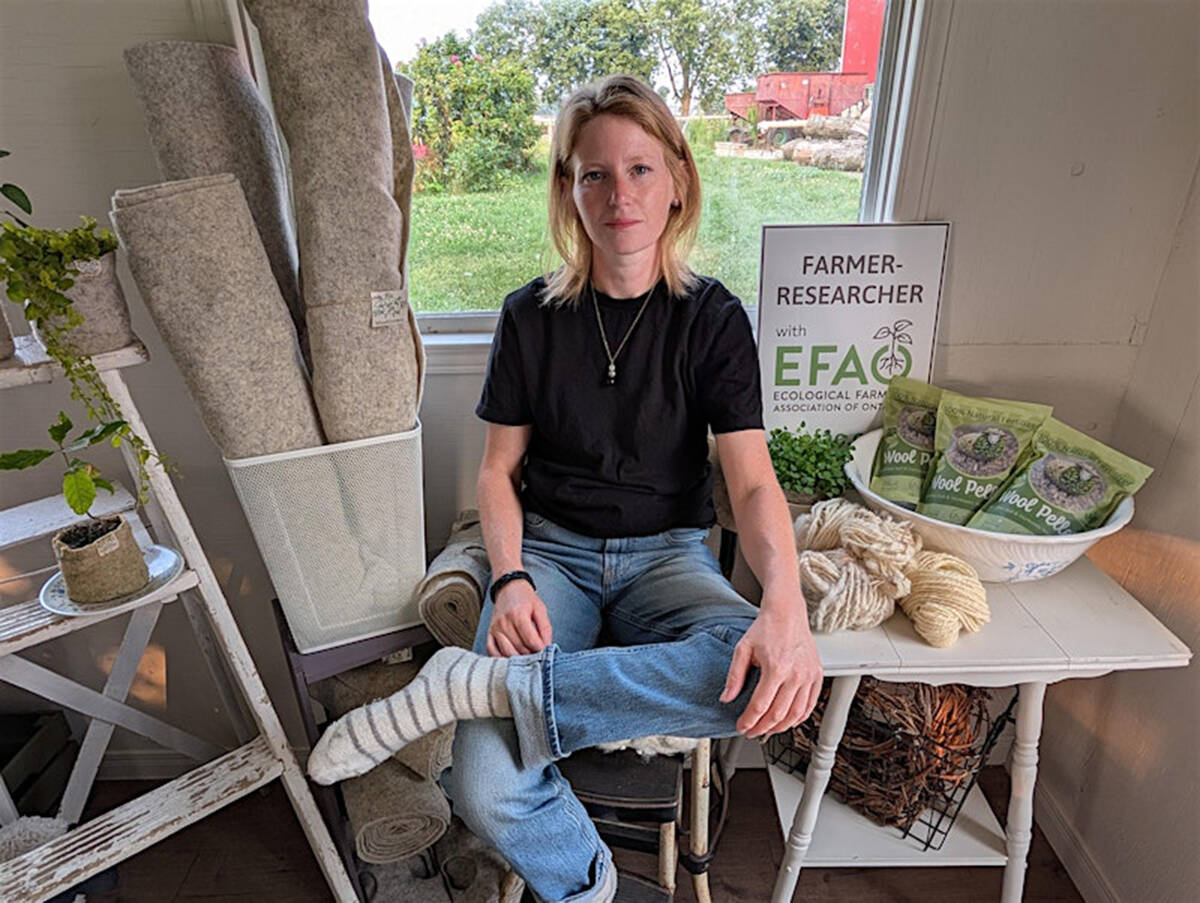
From fleece to fertile ground
Lindsey Weber turns Canadian wool into sustainable, biodegradable weed suppression and horticulture alternatives to plastic, boosting farm sustainability and revitalizing Canada’s wool industry.
That greater amount of milk means calves need a different weaning strategy, she told the 2024 Healthy Calf Conference, hosted by the Veal Farmers of Ontario.
“You’ve put all this time, money, energy into getting them into great growth, then you throw them into a group post-weaning, and watch that dollar amount go down because the calf actually tanks.”
A repeatable process that works on a particular farm is critical for humans to get it right every time and also for the calves as change means stress.
“I’ve always found with calves is that you can do a lot of things wrong, but if you do it consistently, they actually do better than if you keep trying to do things better and changing it up all the time,” says Shore.
Limiting stress on the calves is the goal.
The calves recognize who is feeding them, and Shore says they want to know when someone comes to the hutch or pen and what they’re going to be doing.
“Every time you get a feed schedule change they’re going to feel that stress because now they don’t understand are they going to eat and what are they going to eat?”
Heat and cold stress are other issues. Cold is especially concerning as calves are cold stressed more quickly than mature cows. But don’t just close up the barns to keep the calves warm, as air circulation is key to avoid pneumonia, which Shore calls “our nemesis”.
In the past few years research has highlighted the link between milk fed to calves and their ability to manage disease.
Even if you’re feeding lots of milk, a calf can still get sick, says Shore, but they will mitigate the sickness much better if they are well fed.
Successful young calf outcomes are all about building up the digestive system first to accept more milk, and then to accept grain and hay.
Putting milk into an immature digestive system also causes stress, so starting with more meals helps, even feeding three times daily for the first week.
“When milk goes into the rumen, it essentially ferments. So now you’re creating a lactic acid scenario, and that’s quite a bellyache for them,” Shore said.
Early life preparation will affect digestion for the rest of an animal’s life. In people, Shore says that means about two years, but for a calf, it’s the first 60 days that’s critical.
At the end of that period is weaning, and when calves consume the milk they are on today’s farms, a step-down process is critical. Weaning is a huge stress, as the calves are asked to change everything they’ve learned in their first 40 to 50 days.
“We need to gradually wean them. It really is the best.”
The process has a couple of different options used on farms.
One is to reduce the amount of milk, hold at that level for a few days, then moving it down again to a lower amount. Another is to gradually reduce the milk by a smaller amount, each day over 10 days or two weeks, similar to how automatic milk feeders are programmed to wean calves.
Shore conducted a study on five day or 10-day weaning programs, and immediately there wasn’t much of a difference, but once they were fully weaned, the longer-weaned calves performed better in gain and grain intake. The five-day weaned calves had most of the health issues of the trial, as well.
Calves usually get moved around weaning too, and the research shows that it’s best to group calves at weaning, as opposed to after weaning.
“The minute you wean them, you better take it down to just one change, and that’s a feed change.”
Give them some hay to young calves, says Shore, not really for nutrition, but to alleviate boredom and teaches them about what feed will look like for them in the future. Chopped straw fed to calves also can help, as it it can help develop the rumen and it helps balance the pH in the rumen, which can help reduce acidosis, which comes from grain feeding.
Water is also a critical nutrient, which was emphasized by Shore, as free choice water is correlated with higher grain intake by calves.
With the value of calves escalating over the past couple of years, there’s increasing reason to make sure they enter and pass through the weaning period healthy and eating well.







